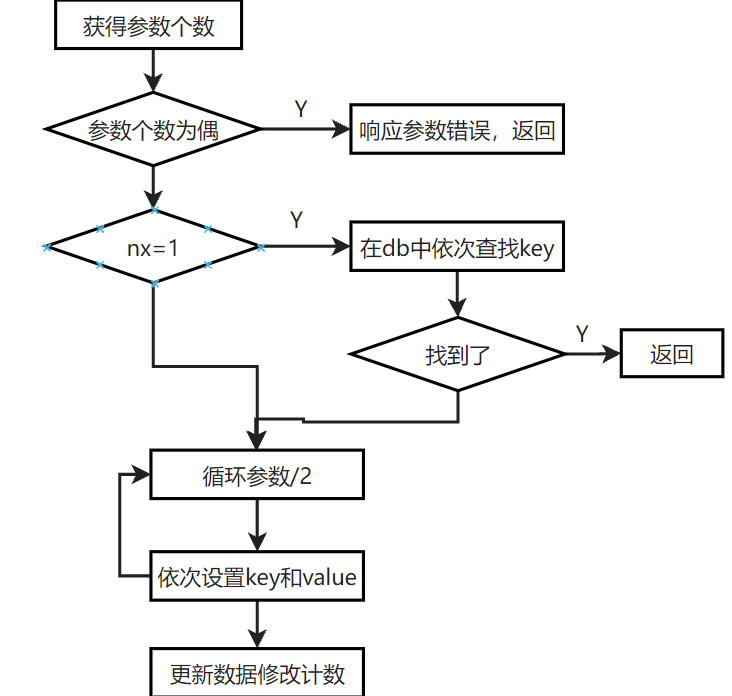内存大小计算,在jdk<=8的版本中,可以使用ObjectSizeCalculator,这个类在8之后的版本被移出了。
还可以使用lucene-core的RamUsageEstimator来实现,但这个包中其他类都用不上,会增加最终包大小大约5M,为了减少包尺寸,就把这个类单独复制了一份出来,并做出一些适配修改:
1 移除了lucene中特定的类
2 移除了安全管理器的特权访问操作(jdk8之后不推荐使用安全管理器并标记为移除)
import lombok.extern.slf4j.Slf4j;import java.lang.reflect.Array;
import java.lang.reflect.Field;
import java.lang.reflect.Method;
import java.lang.reflect.Modifier;
import java.text.DecimalFormat;
import java.text.DecimalFormatSymbols;
import java.util.*;
import java.util.function.Function;
import java.util.logging.Logger;/*** Estimates the size (memory representation) of Java objects.** <p>This class uses assumptions that were discovered for the Hotspot virtual machine. If you use a* non-OpenJDK/Oracle-based JVM, the measurements may be slightly wrong.** @lucene.internal* @see #shallowSizeOf(Object)* @see #shallowSizeOfInstance(Class)*//*** @author heasy* @date 2024/7/11 下午3:14**/
@Slf4j
public final class RamUsageUtil {/*** One kilobyte bytes.*/public static final long ONE_KB = 1024;/*** One megabyte bytes.*/public static final long ONE_MB = ONE_KB * ONE_KB;/*** One gigabyte bytes.*/public static final long ONE_GB = ONE_KB * ONE_MB;/*** No instantiation.*/private RamUsageUtil() {}/*** True, iff compressed references (oops) are enabled by this JVM*/public static final boolean COMPRESSED_REFS_ENABLED;/*** Number of bytes this JVM uses to represent an object reference.*/public static final int NUM_BYTES_OBJECT_REF;/*** Number of bytes to represent an object header (no fields, no alignments).*/public static final int NUM_BYTES_OBJECT_HEADER;/*** Number of bytes to represent an array header (no content, but with alignments).*/public static final int NUM_BYTES_ARRAY_HEADER;/*** A constant specifying the object alignment boundary inside the JVM. Objects will always take a* full multiple of this constant, possibly wasting some space.*/public static final int NUM_BYTES_OBJECT_ALIGNMENT;/*** Approximate memory usage that we assign to all unknown queries - this maps roughly to a* BooleanQuery with a couple term clauses.*/public static final int QUERY_DEFAULT_RAM_BYTES_USED = 1024;/*** Approximate memory usage that we assign to all unknown objects - this maps roughly to a few* primitive fields and a couple short String-s.*/public static final int UNKNOWN_DEFAULT_RAM_BYTES_USED = 256;/*** Sizes of primitive classes.*/public static final Map<Class<?>, Integer> primitiveSizes;static {Map<Class<?>, Integer> primitiveSizesMap = new IdentityHashMap<>();primitiveSizesMap.put(boolean.class, 1);primitiveSizesMap.put(byte.class, 1);primitiveSizesMap.put(char.class, Integer.valueOf(Character.BYTES));primitiveSizesMap.put(short.class, Integer.valueOf(Short.BYTES));primitiveSizesMap.put(int.class, Integer.valueOf(Integer.BYTES));primitiveSizesMap.put(float.class, Integer.valueOf(Float.BYTES));primitiveSizesMap.put(double.class, Integer.valueOf(Double.BYTES));primitiveSizesMap.put(long.class, Integer.valueOf(Long.BYTES));primitiveSizes = Collections.unmodifiableMap(primitiveSizesMap);}static final int INTEGER_SIZE, LONG_SIZE, STRING_SIZE;/*** For testing only*/static final boolean JVM_IS_HOTSPOT_64BIT;private static final String UNKNOWN = "Unknown";public static final String OS_ARCH = System.getProperty("os.arch", UNKNOWN);public static final boolean JRE_IS_64BIT = is64Bit();private static boolean is64Bit() {final String datamodel = System.getProperty("sun.arch.data.model");if (datamodel != null) {return datamodel.contains("64");} else {return (OS_ARCH != null && OS_ARCH.contains("64"));}}/** Initialize constants and try to collect information about the JVM internals. */static {if (JRE_IS_64BIT) {JVM_IS_HOTSPOT_64BIT = HotspotVMOptions.IS_HOTSPOT_VM;// Try to get compressed oops and object alignment (the default seems to be 8 on Hotspot);// (this only works on 64 bit, on 32 bits the alignment and reference size is fixed):COMPRESSED_REFS_ENABLED =HotspotVMOptions.get("UseCompressedOops").map(Boolean::valueOf).orElse(false);NUM_BYTES_OBJECT_ALIGNMENT =HotspotVMOptions.get("ObjectAlignmentInBytes").map(Integer::valueOf).orElse(8);// reference size is 4, if we have compressed oops:NUM_BYTES_OBJECT_REF = COMPRESSED_REFS_ENABLED ? 4 : 8;// "best guess" based on reference size:NUM_BYTES_OBJECT_HEADER = 8 + NUM_BYTES_OBJECT_REF;// array header is NUM_BYTES_OBJECT_HEADER + NUM_BYTES_INT, but aligned (object alignment):NUM_BYTES_ARRAY_HEADER = (int) alignObjectSize(NUM_BYTES_OBJECT_HEADER + Integer.BYTES);} else {JVM_IS_HOTSPOT_64BIT = false;COMPRESSED_REFS_ENABLED = false;NUM_BYTES_OBJECT_ALIGNMENT = 8;NUM_BYTES_OBJECT_REF = 4;NUM_BYTES_OBJECT_HEADER = 8;// For 32 bit JVMs, no extra alignment of array header:NUM_BYTES_ARRAY_HEADER = NUM_BYTES_OBJECT_HEADER + Integer.BYTES;}INTEGER_SIZE = (int) shallowSizeOfInstance(Integer.class);LONG_SIZE = (int) shallowSizeOfInstance(Long.class);STRING_SIZE = (int) shallowSizeOfInstance(String.class);}/*** Approximate memory usage that we assign to a Hashtable / HashMap entry.*/public static final long HASHTABLE_RAM_BYTES_PER_ENTRY =// key + value *// hash tables need to be oversized to avoid collisions, assume 2x capacity(2L * NUM_BYTES_OBJECT_REF) * 2;/*** Approximate memory usage that we assign to a LinkedHashMap entry.*/public static final long LINKED_HASHTABLE_RAM_BYTES_PER_ENTRY =HASHTABLE_RAM_BYTES_PER_ENTRY + 2L * NUM_BYTES_OBJECT_REF; // previous & next references/*** Aligns an object size to be the next multiple of {@link #NUM_BYTES_OBJECT_ALIGNMENT}.*/public static long alignObjectSize(long size) {size += (long) NUM_BYTES_OBJECT_ALIGNMENT - 1L;return size - (size % NUM_BYTES_OBJECT_ALIGNMENT);}/*** Return the shallow size of the provided {@link Integer} object. Ignores the possibility that* this object is part of the VM IntegerCache*/public static long sizeOf(Integer ignored) {return INTEGER_SIZE;}/*** Return the shallow size of the provided {@link Long} object. Ignores the possibility that this* object is part of the VM LongCache*/public static long sizeOf(Long ignored) {return LONG_SIZE;}/*** Returns the size in bytes of the byte[] object.*/public static long sizeOf(byte[] arr) {return alignObjectSize((long) NUM_BYTES_ARRAY_HEADER + arr.length);}/*** Returns the size in bytes of the boolean[] object.*/public static long sizeOf(boolean[] arr) {return alignObjectSize((long) NUM_BYTES_ARRAY_HEADER + arr.length);}/*** Returns the size in bytes of the char[] object.*/public static long sizeOf(char[] arr) {return alignObjectSize((long) NUM_BYTES_ARRAY_HEADER + (long) Character.BYTES * arr.length);}/*** Returns the size in bytes of the short[] object.*/public static long sizeOf(short[] arr) {return alignObjectSize((long) NUM_BYTES_ARRAY_HEADER + (long) Short.BYTES * arr.length);}/*** Returns the size in bytes of the int[] object.*/public static long sizeOf(int[] arr) {return alignObjectSize((long) NUM_BYTES_ARRAY_HEADER + (long) Integer.BYTES * arr.length);}/*** Returns the size in bytes of the float[] object.*/public static long sizeOf(float[] arr) {return alignObjectSize((long) NUM_BYTES_ARRAY_HEADER + (long) Float.BYTES * arr.length);}/*** Returns the size in bytes of the long[] object.*/public static long sizeOf(long[] arr) {return alignObjectSize((long) NUM_BYTES_ARRAY_HEADER + (long) Long.BYTES * arr.length);}/*** Returns the size in bytes of the double[] object.*/public static long sizeOf(double[] arr) {return alignObjectSize((long) NUM_BYTES_ARRAY_HEADER + (long) Double.BYTES * arr.length);}/*** Returns the size in bytes of the String[] object.*/public static long sizeOf(String[] arr) {long size = shallowSizeOf(arr);for (String s : arr) {if (s == null) {continue;}size += sizeOf(s);}return size;}/*** Recurse only into immediate descendants.*/public static final int MAX_DEPTH = 1;/*** Returns the size in bytes of a Map object, including sizes of its keys and values, supplying* {@link #UNKNOWN_DEFAULT_RAM_BYTES_USED} when object type is not well known. This method* recurses up to {@link #MAX_DEPTH}.*/public static long sizeOfMap(Map<?, ?> map) {return sizeOfMap(map, 0, UNKNOWN_DEFAULT_RAM_BYTES_USED);}/*** Returns the size in bytes of a Map object, including sizes of its keys and values, supplying* default object size when object type is not well known. This method recurses up to {@link* #MAX_DEPTH}.*/public static long sizeOfMap(Map<?, ?> map, long defSize) {return sizeOfMap(map, 0, defSize);}private static long sizeOfMap(Map<?, ?> map, int depth, long defSize) {if (map == null) {return 0;}long size = shallowSizeOf(map);if (depth > MAX_DEPTH) {return size;}long sizeOfEntry = -1;for (Map.Entry<?, ?> entry : map.entrySet()) {if (sizeOfEntry == -1) {sizeOfEntry = shallowSizeOf(entry);}size += sizeOfEntry;size += sizeOfObject(entry.getKey(), depth, defSize);size += sizeOfObject(entry.getValue(), depth, defSize);}return alignObjectSize(size);}/*** Returns the size in bytes of a Collection object, including sizes of its values, supplying* {@link #UNKNOWN_DEFAULT_RAM_BYTES_USED} when object type is not well known. This method* recurses up to {@link #MAX_DEPTH}.*/public static long sizeOfCollection(Collection<?> collection) {return sizeOfCollection(collection, 0, UNKNOWN_DEFAULT_RAM_BYTES_USED);}/*** Returns the size in bytes of a Collection object, including sizes of its values, supplying* default object size when object type is not well known. This method recurses up to {@link* #MAX_DEPTH}.*/public static long sizeOfCollection(Collection<?> collection, long defSize) {return sizeOfCollection(collection, 0, defSize);}private static long sizeOfCollection(Collection<?> collection, int depth, long defSize) {if (collection == null) {return 0;}long size = shallowSizeOf(collection);if (depth > MAX_DEPTH) {return size;}// assume array-backed collection and add per-object referencessize += NUM_BYTES_ARRAY_HEADER + collection.size() * NUM_BYTES_OBJECT_REF;for (Object o : collection) {size += sizeOfObject(o, depth, defSize);}return alignObjectSize(size);}/*** Best effort attempt to estimate the size in bytes of an undetermined object. Known types will* be estimated according to their formulas, and all other object sizes will be estimated as* {@link #UNKNOWN_DEFAULT_RAM_BYTES_USED}.*/public static long sizeOfObject(Object o) {return sizeOfObject(o, 0, UNKNOWN_DEFAULT_RAM_BYTES_USED);}/*** Best effort attempt to estimate the size in bytes of an undetermined object. Known types will* be estimated according to their formulas, and all other object sizes will be estimated using* {@link #shallowSizeOf(Object)}, or using the supplied <code>defSize</code> parameter if its* value is greater than 0.*/public static long sizeOfObject(Object o, long defSize) {return sizeOfObject(o, 0, defSize);}private static long sizeOfObject(Object o, int depth, long defSize) {if (o == null) {return 0;}long size;if (o instanceof String) {size = sizeOf((String) o);} else if (o instanceof boolean[]) {size = sizeOf((boolean[]) o);} else if (o instanceof byte[]) {size = sizeOf((byte[]) o);} else if (o instanceof char[]) {size = sizeOf((char[]) o);} else if (o instanceof double[]) {size = sizeOf((double[]) o);} else if (o instanceof float[]) {size = sizeOf((float[]) o);} else if (o instanceof int[]) {size = sizeOf((int[]) o);} else if (o instanceof Integer) {size = sizeOf((Integer) o);} else if (o instanceof Long) {size = sizeOf((Long) o);} else if (o instanceof long[]) {size = sizeOf((long[]) o);} else if (o instanceof short[]) {size = sizeOf((short[]) o);} else if (o instanceof String[]) {size = sizeOf((String[]) o);} else if (o instanceof Map) {size = sizeOfMap((Map<?, ?>) o, ++depth, defSize);} else if (o instanceof Collection) {size = sizeOfCollection((Collection<?>) o, ++depth, defSize);} else {if (defSize > 0) {size = defSize;} else {size = shallowSizeOf(o);}}return size;}/*** Returns the size in bytes of the String object.*/public static long sizeOf(String s) {if (s == null) {return 0;}// may not be true in Java 9+ and CompactStrings - but we have no way to determine this// char[] + hashCodelong size = STRING_SIZE + (long) NUM_BYTES_ARRAY_HEADER + (long) Character.BYTES * s.length();return alignObjectSize(size);}/*** Returns the size in bytes of the byte[] object.*/public static long shallowSizeOf(byte[] arr) {return sizeOf(arr);}/*** Returns the size in bytes of the boolean[] object.*/public static long shallowSizeOf(boolean[] arr) {return sizeOf(arr);}/*** Returns the size in bytes of the char[] object.*/public static long shallowSizeOf(char[] arr) {return sizeOf(arr);}/*** Returns the size in bytes of the short[] object.*/public static long shallowSizeOf(short[] arr) {return sizeOf(arr);}/*** Returns the size in bytes of the int[] object.*/public static long shallowSizeOf(int[] arr) {return sizeOf(arr);}/*** Returns the size in bytes of the float[] object.*/public static long shallowSizeOf(float[] arr) {return sizeOf(arr);}/*** Returns the size in bytes of the long[] object.*/public static long shallowSizeOf(long[] arr) {return sizeOf(arr);}/*** Returns the size in bytes of the double[] object.*/public static long shallowSizeOf(double[] arr) {return sizeOf(arr);}/*** Returns the shallow size in bytes of the Object[] object.*/// Use this method instead of #shallowSizeOf(Object) to avoid costly reflectionpublic static long shallowSizeOf(Object[] arr) {return alignObjectSize((long) NUM_BYTES_ARRAY_HEADER + (long) NUM_BYTES_OBJECT_REF * arr.length);}/*** Estimates a "shallow" memory usage of the given object. For arrays, this will be the memory* taken by array storage (no subreferences will be followed). For objects, this will be the* memory taken by the fields.** <p>JVM object alignments are also applied.*/public static long shallowSizeOf(Object obj) {if (obj == null) return 0;final Class<?> clz = obj.getClass();if (clz.isArray()) {return shallowSizeOfArray(obj);} else {return shallowSizeOfInstance(clz);}}/*** Returns the shallow instance size in bytes an instance of the given class would occupy. This* works with all conventional classes and primitive types, but not with arrays (the size then* depends on the number of elements and varies from object to object).** @throws IllegalArgumentException if {@code clazz} is an array class.* @see #shallowSizeOf(Object)*/public static long shallowSizeOfInstance(Class<?> clazz) {if (clazz.isArray())throw new IllegalArgumentException("This method does not work with array classes.");if (clazz.isPrimitive()) return primitiveSizes.get(clazz);long size = NUM_BYTES_OBJECT_HEADER;// Walk type hierarchyfor (; clazz != null; clazz = clazz.getSuperclass()) {final Field[] fields = clazz.getDeclaredFields();for (Field f : fields) {if (!Modifier.isStatic(f.getModifiers())) {size = adjustForField(size, f);}}}return alignObjectSize(size);}/*** Return shallow size of any <code>array</code>.*/private static long shallowSizeOfArray(Object array) {long size = NUM_BYTES_ARRAY_HEADER;final int len = Array.getLength(array);if (len > 0) {Class<?> arrayElementClazz = array.getClass().getComponentType();if (arrayElementClazz.isPrimitive()) {size += (long) len * primitiveSizes.get(arrayElementClazz);} else {size += (long) NUM_BYTES_OBJECT_REF * len;}}return alignObjectSize(size);}/*** This method returns the maximum representation size of an object. <code>sizeSoFar</code> is the* object's size measured so far. <code>f</code> is the field being probed.** <p>The returned offset will be the maximum of whatever was measured so far and <code>f</code>* field's offset and representation size (unaligned).*/public static long adjustForField(long sizeSoFar, final Field f) {final Class<?> type = f.getType();final int fsize = type.isPrimitive() ? primitiveSizes.get(type) : NUM_BYTES_OBJECT_REF;// TODO: No alignments based on field type/ subclass fields alignments?return sizeSoFar + fsize;}/*** Returns <code>size</code> in human-readable units (GB, MB, KB or bytes).*/public static String humanReadableUnits(long bytes) {return humanReadableUnits(bytes, new DecimalFormat("0.#", DecimalFormatSymbols.getInstance(Locale.ROOT)));}/*** Returns <code>size</code> in human-readable units (GB, MB, KB or bytes).*/public static String humanReadableUnits(long bytes, DecimalFormat df) {if (bytes / ONE_GB > 0) {return df.format((float) bytes / ONE_GB) + " GB";} else if (bytes / ONE_MB > 0) {return df.format((float) bytes / ONE_MB) + " MB";} else if (bytes / ONE_KB > 0) {return df.format((float) bytes / ONE_KB) + " KB";} else {return bytes + " bytes";}}/** Licensed to the Apache Software Foundation (ASF) under one or more* contributor license agreements. See the NOTICE file distributed with* this work for additional information regarding copyright ownership.* The ASF licenses this file to You under the Apache License, Version 2.0* (the "License"); you may not use this file except in compliance with* the License. You may obtain a copy of the License at** http://www.apache.org/licenses/LICENSE-2.0** Unless required by applicable law or agreed to in writing, software* distributed under the License is distributed on an "AS IS" BASIS,* WITHOUT WARRANTIES OR CONDITIONS OF ANY KIND, either express or implied.* See the License for the specific language governing permissions and* limitations under the License.*//*** Accessor to get Hotspot VM Options (if available).*/static final class HotspotVMOptions {private HotspotVMOptions() {} // can't construct/*** True iff the Java VM is based on Hotspot and has the Hotspot MX bean readable by Lucene*/public static final boolean IS_HOTSPOT_VM;/*** Returns an optional with the value of a Hotspot VM option. If the VM option does not exist or* is not readable, returns an empty optional.*/public static Optional<String> get(String name) {return ACCESSOR.apply(Objects.requireNonNull(name, "name"));}private static final String MANAGEMENT_FACTORY_CLASS = "java.lang.management.ManagementFactory";private static final String HOTSPOT_BEAN_CLASS = "com.sun.management.HotSpotDiagnosticMXBean";private static final Function<String, Optional<String>> ACCESSOR;static {boolean isHotspot = false;Function<String, Optional<String>> accessor = name -> Optional.empty();try {final Class<?> beanClazz = Class.forName(HOTSPOT_BEAN_CLASS);// we use reflection for this, because the management factory is not part// of java.base module:final Object hotSpotBean =Class.forName(MANAGEMENT_FACTORY_CLASS).getMethod("getPlatformMXBean", Class.class).invoke(null, beanClazz);if (hotSpotBean != null) {final Method getVMOptionMethod = beanClazz.getMethod("getVMOption", String.class);final Method getValueMethod = getVMOptionMethod.getReturnType().getMethod("getValue");isHotspot = true;accessor =name -> {try {final Object vmOption = getVMOptionMethod.invoke(hotSpotBean, name);return Optional.of(getValueMethod.invoke(vmOption).toString());} catch (@SuppressWarnings("unused")ReflectiveOperationException| RuntimeException e) {return Optional.empty();}};}} catch (@SuppressWarnings("unused") ReflectiveOperationException | RuntimeException e) {final Logger log = Logger.getLogger(HotspotVMOptions.class.getName());final Module module = HotspotVMOptions.class.getModule();final ModuleLayer layer = module.getLayer();// classpath / unnamed module has no layer, so we need to check:if (layer != null&& !layer.findModule("jdk.management").map(module::canRead).orElse(false)) {log.warning("Lucene cannot access JVM internals to optimize algorithms or calculate object sizes, unless the 'jdk.management' Java module "+ "is readable [please add 'jdk.management' to modular application either by command line or its module descriptor].");} else {log.warning("Lucene cannot optimize algorithms or calculate object sizes for JVMs that are not based on Hotspot or a compatible implementation.");}}IS_HOTSPOT_VM = isHotspot;ACCESSOR = accessor;}}}


















